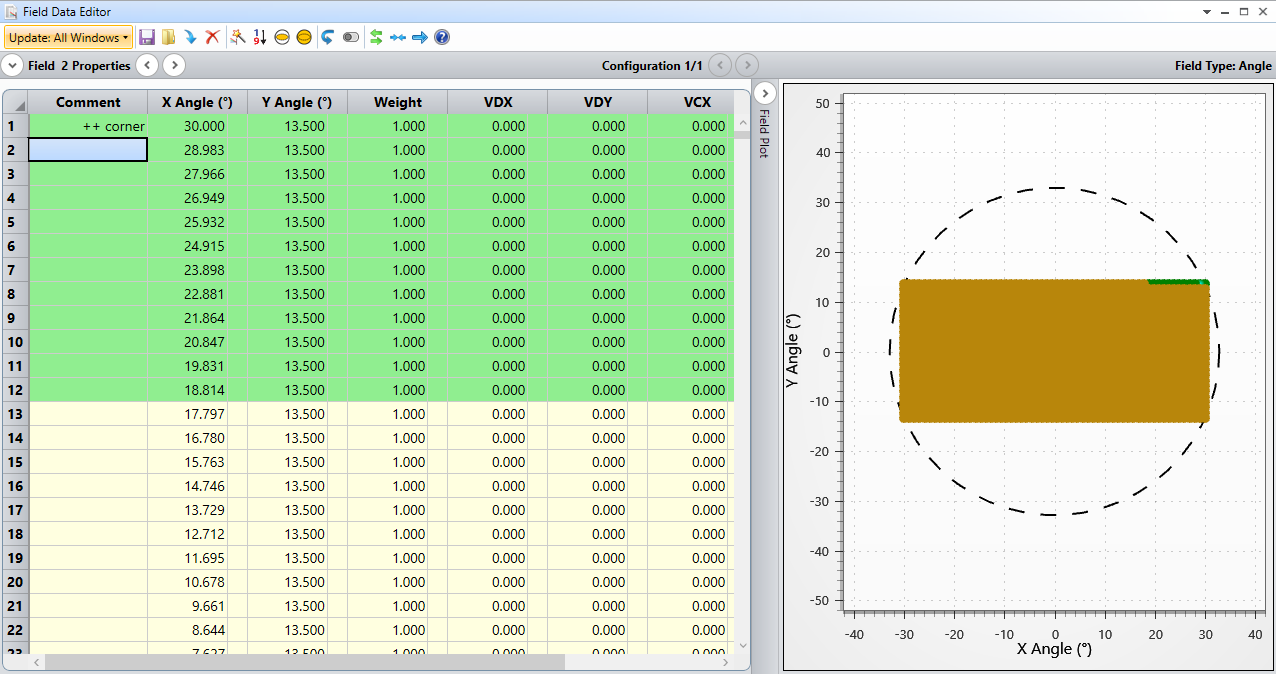Hello Experts,
is there a way to simulate/evaluate the PSF distribution ove the image plane?
I would like to use the PSF distribution to convolve images and create output images for which i need the PSF distribution over the image plane.
I tried to create grid field positions and then extracting the Huygens PSF in txt format then combining them together to form a consolidated PSF of the image plane. Is that the right way to go?
The grid positions created here is only a quarter of the entire FOV with the idea that i can later mirror them to create the PSF for the entire image plane because the lens is symmetric.

Best regards,
Amit






